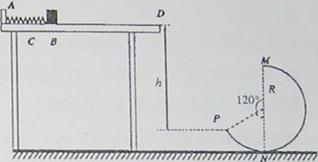The majority of successful senior managers do not closely follow the classical rational model of first clarifying goals, assessing the problem, formulating options, estimating likelihood of success, making a decision, and only then taking action to implement the decision. Rather, in their day-by-day tactical activities, these senior executives rely on what is vaguely termed "intuition" to manage a network of interrelated problems that require them to deal with ambiguity, inconsistency, novelty, and surprise; and to integrate action into the process of thinking.
Generations of writers on management have recognized that some practicing managers rely heavily on intuition. In general, however, such writers display a poor grasp of what intuition is. Some see it as the opposite of rationality; others view it as an excuse of capriciousness.
Isenberg’s recent research on the cognitive processes of senior managers reveals that managers’ intuition is neither of these. Rather, senior managers use intuition in at least five distinct ways. First, they intuitively sense when a problem exists. Second, managers rely on intuition to perform well-learned behavior patterns rapidly. This intuition is not arbitrary or irrational, but is based on years of painstaking practice and personal experience that build skills. A third function of intuition is to synthesize isolated bits of data and practice into an integrated picture, often in an "Aha!" experience. Fourth, some managers use intuition as a check on the results of more rational analysis. Most senior executives are familiar with the formal decision analysis models and tools, and those who use such systematic methods for reaching decisions are occasionally suspicious of solutions suggested by these methods which run counter to their sense of the correct course of action. Finally, managers can use intuition to bypass in-depth analysis and move rapidly to find out a plausible solution. Used in this way, intuition is an almost instantaneous cognitive process in which a manager recognizes familiar patterns.
One of the implications of the intuitive style of executive management is that "thinking" is inseparable from acting. Since managers often "know" what is right before they can analyze and explain it, they frequently act first and explain later. Analysis is invariably tied to action in thinking/acting cycles, in which managers develop thoughts about their companies and organizations not by analyzing a problematic situation and then acting, but by acting and analyzing in close concert.
Given the great uncertainty of many of the management issues that they face, senior managers often initiate a course of action simply to learn more about an issue. They then use the results of the action to develop a more complete understanding of the issue. One implication of thinking/acting cycles is that action is often part of defining the problem, not just of implementing the solution. (454 words)
Notes: capriciousness 多变,反复无常。run counter to 与……背道而驰;违反。bypass 绕过。in close concert一齐,一致。given prep.考虑到,由于。
According to the text, which of the following would most probably be one major difference in behavior between Manager X, who uses intuition to reach decisions, and Manager Y, who uses only formal decision analysis()
A. Manager X checks possible solutions to a problem by systematic analysis; Manager Y does not
B. Manager X takes action in order to arrive at the solution to a problem; Manager Y does not
C. Manager Y draws on years of personal experience in creating a solution to a problem; Manager X does not
D. Manager X depends on day-by-day tactical activities; Manager X does not

 =0.4
=0.4 ⑤
⑤ -
- ⑦
⑦ ⑧
⑧ +m2g(3-2cos60°)=16.8N
+m2g(3-2cos60°)=16.8N ⑪
⑪ -
- ⑫
⑫ ⑬
⑬ -
- ⑭
⑭ ⑮
⑮ +m2gh(
+m2gh( -
- )-m2gR(
)-m2gR( +cos60°)
+cos60°)